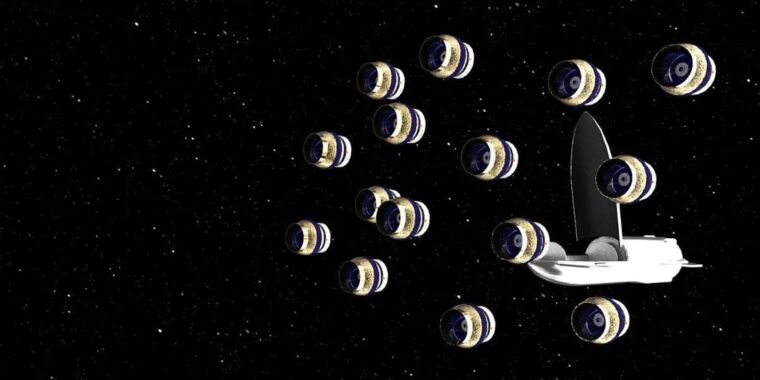- cross-posted to:
- space@beehaw.org
- cross-posted to:
- space@beehaw.org
A thinner, lighter, cheaper lens could be our way to study the Universe further.
In 2016, aerospace giant Northrop Grumman invited me and 14 other professors and NASA scientists—all experts on exoplanets and the search for extraterrestrial life—to Los Angeles to answer one question: What will exoplanet space telescopes look like in 50 years?
In our discussions, we realized that a major bottleneck preventing the construction of more powerful telescopes is the challenge of making larger mirrors and getting them into orbit. To bypass this bottleneck, a few of us came up with the idea of revisiting an old technology called diffractive lenses.
Color me skeptical of this story. The author no doubt believes it.
But the fact that this was organized and sponsored by NG makes me skeptical of this take. Maybe it’s less scientists innovating and inventing and more an NSA/NRO-approved, NG-led, soft disclosure of technology that already exists. The scientists are likely reinventing the wheel after getting a nugget of an idea seeded by NG.
Civilian optical space telescopes lag far behind spy ones. Literally decades.
KH-11 is much, much older than Hubble.
Some improved KH-11s were deemed unnecessary or out-of-date and gifted to NASA. Never flown, still in a warehouse somewhere.
I have strong suspicions that Webb’s folding mirror system wasn’t exactly new and novel either. Probably just a refinment of something NRO and Ball Aerospace worked out many years prior. No hard evidence for that, however.
Anyway, long-winded way of saying there’s a decent chance these guys are trying to figure out something that’s already floating around up there and maybe already 5-10 years old or more.
https://en.wikipedia.org/wiki/List_of_NRO_launches#Launch_history?wprov=sfla1



